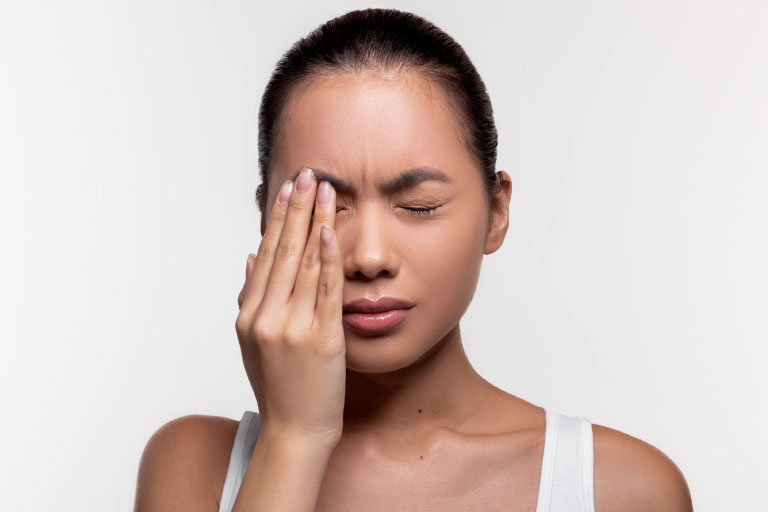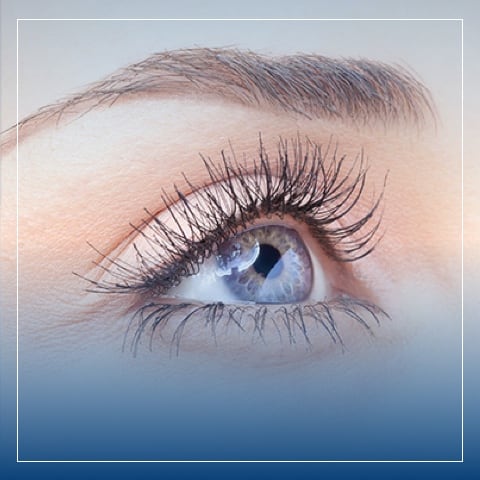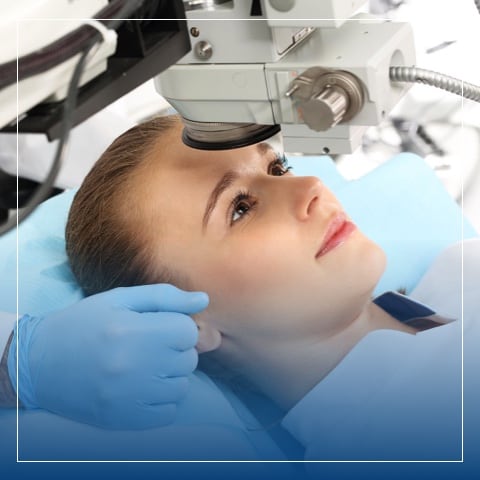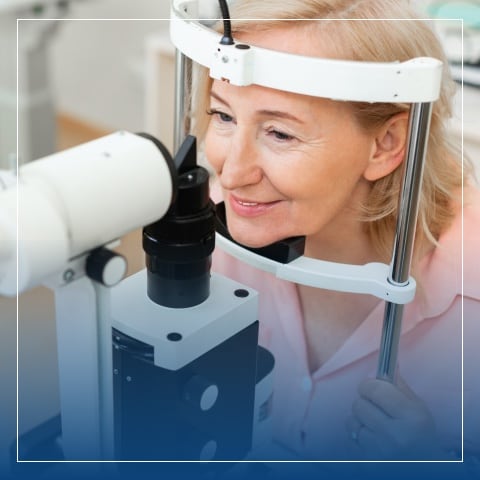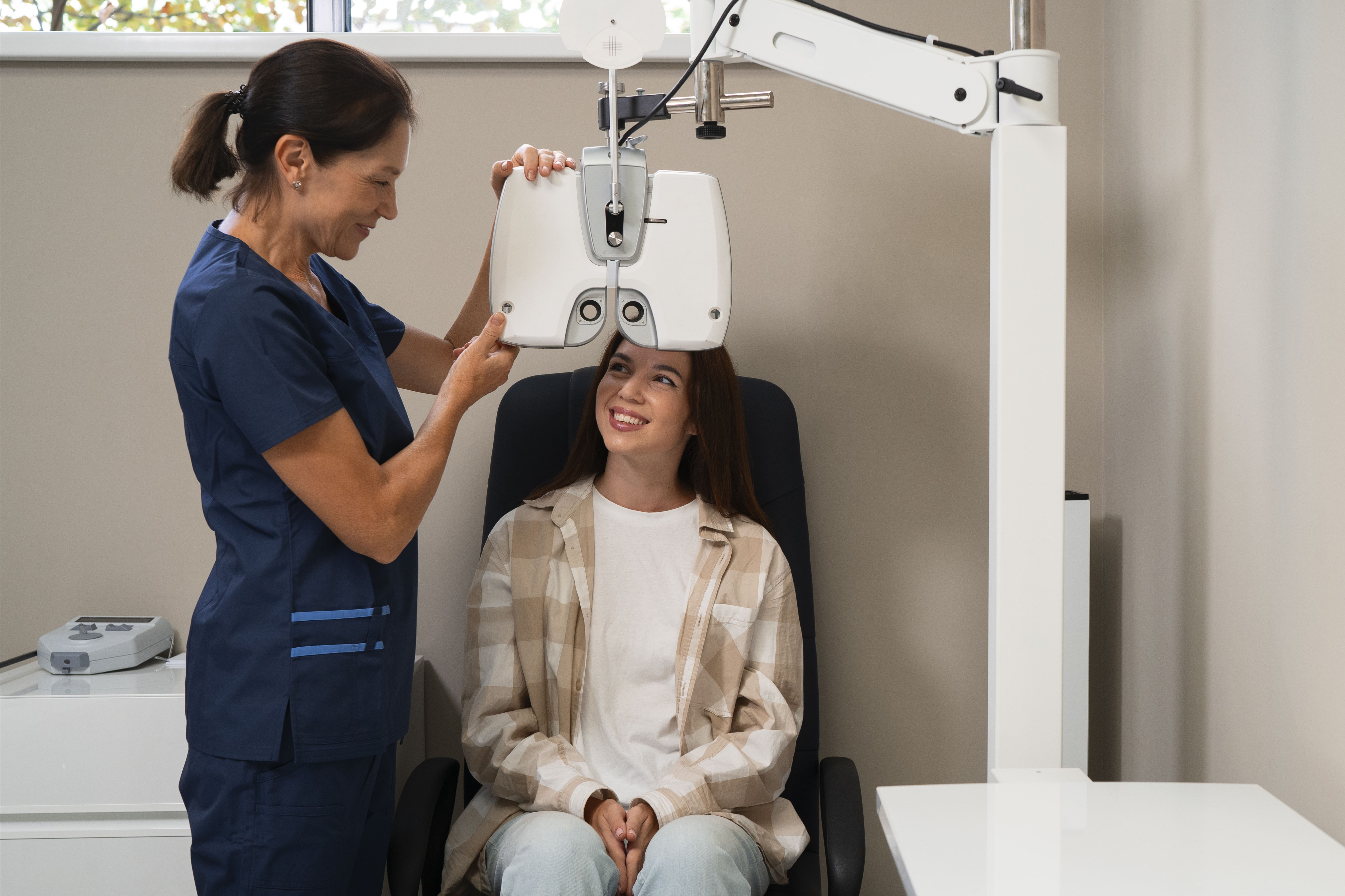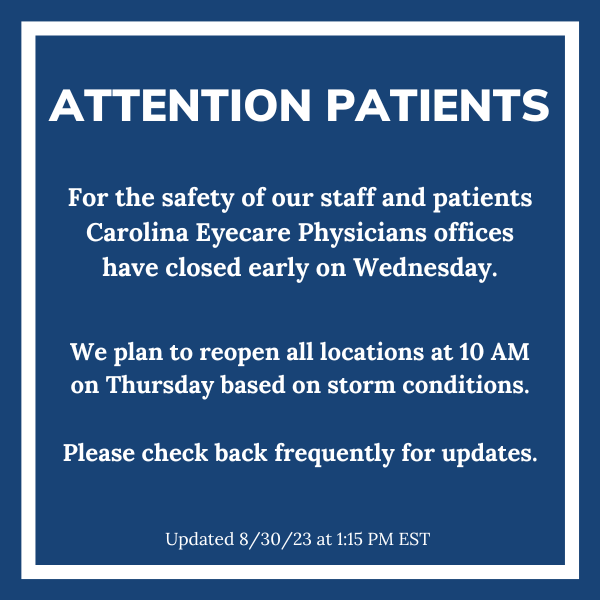Dry eye syndrome can leave your eyes feeling uncomfortable, appearing red, or as though sand is trapped within them, often resulting in a burning or stinging sensation. This condition arises when the small glands around your eyelids fail to produce enough tears, which is vital for keeping your eyes moist, clear, and healthy. Are you among the 16 million Americans who have this condition?
Normally, tears are important for maintaining the smoothness and hydration of the eye’s surface, besides protecting it from infections by washing away dust and debris. However, aging, certain medications, or health conditions can lower tear production.
See the eight recommended dry eye therapy tips by Carolina Eyecare Physicians ophthalmologists for North Charleston, Summerville, Moncks Corner, West Ashley, Mt. Pleasant, and Mathis Ferry patients below.
1. Heat & Massage
Tears consist of oil, water, and mucus. When the tiny glands along your eyelids become inflamed or clogged, it can lead to dry eye. Applying warm compresses can help ease irritation and loosen up clogged oils. Here’s how to do it:
- Wet a clean washcloth with warm water.
- Wring it out and place it over your closed eye for at least a minute.
- Gently press the edge of your eyelid to help squeeze out the clogged oils.
- Repeat daily to reduce inflammation.
For individuals suffering from Meibomian Gland Dysfunction (MGD), where glands in the eyelids that contribute to the oily layer of tears become blocked, applying warm compresses and massaging the eyelids might not work as dry eye treatment. In such cases, these home remedies don’t stimulate oil production or clear the blockages in tear ducts.
A dry eye specialist can perform personalized in-office procedures focusing on applying heat directly to the glands to dissolve waxy deposits blocking them. These treatments address the root cause of dry eyes in patients with MGD, offering more long-term relief by improving the gland’s functionality and tear quality. Read more about dry eye symptoms and treatment.
2. Wash Dirty Eyelids and Lashes
A simple way to alleviate dry eye symptoms is by routinely cleaning your eyelids and lashes with mild soap or baby shampoo. This practice helps eliminate crust and debris, potentially decreasing eyelid inflammation. While it might not cure dry eyes outright, it’s an effective preventive strategy.
By keeping the eyelid area clean, you can help prevent tear duct and eyelid blockages, tackling a primary cause of dry eyes. Make regular eyelid washing part of your eye care routine.
3. Blink Often
Staring at screens (like computers or phones) impacts how often you blink. Remember the 20-20-20 rule: every 20 minutes, close your eyes for 20 seconds and look at something 20 feet away. Additionally, position your screen below eye level to minimize tear evaporation between blinks.
4. Take Vitamin Supplements
Eating a healthy and balanced diet supports whole-body wellness, including the health of your eyes. Foods rich in omega-3 fatty acids, such as salmon, tuna, sardines, trout, mackerel, walnuts, vegetable oils, and flaxseeds, can particularly benefit your eyes.
Omega-3 fatty acids help improve the function of the glands that produce the oily part of your tears, relieving dry eye discomfort. These can also come from supplements, giving you flexibility in getting them into your diet. Vitamins A and D may also improve eye health, potentially alleviating dry eye symptoms—supplement these if needed, but always consult a healthcare professional to ensure these changes fit into your broader health plan.
5. Stay Hydrated
Proper hydration is critical for overall health, including eye health. Drink enough water throughout the day to keep your eyes moist.
6. Protect Your Eyes From the Wind and Sun
Wind and bright sunlight worsen dry eye symptoms by speeding up tear evaporation and exposing eyes to UV rays. Wearing wraparound sunglasses shields your eyes, prevents tear loss, and blocks UV light. This easy habit helps maintain eye moisture for easy relief on windy and sunny days.

7. Use a Humidifier and a Filter
Dry indoor air can contribute to the problem. Use a humidifier to add moisture to the air, especially during winter. Additionally, an air filter can be used to eliminate airborne irritants.
8. Practice the Dos and Don’ts for Eye Drops
Eye drops—also known as artificial tears—are a go-to solution for dry eye relief. They help by supplementing your natural tears, which is especially useful when your eyes aren’t making enough on their own. Frequent application may be necessary for chronic conditions. Yet, it’s important to understand that dry eyes can also result from poor oil production by the eyelids. In such cases, drops only provide temporary relief without addressing the underlying oil deficiency. Key tips include:
- Do: Choose preservative-free artificial tears for regular use, available in single-use vials to avoid irritation from preservatives.
- Don’t: Rely solely on eye drops for long-term dry eye management; prolonged use of preservative-containing drops can aggravate dryness.
For lasting moisture, use eye ointments. They’re thicker, creating a protective layer that keeps eyes moist longer than drops, but can blur vision, so they’re best used at night.
Schedule an appointment with Carolina Eyecare Physicians for more information on getting started with dry eye therapy in North Charleston, Summerville, Moncks Corner, West Ashley, Mt. Pleasant, and Mathis Ferry.
**The information provided in this blog on natural remedies for dry eye relief is for general informational purposes only. Remember to seek advice from a qualified eye care professional with any questions you may have regarding your specific medical condition or treatment options.**

